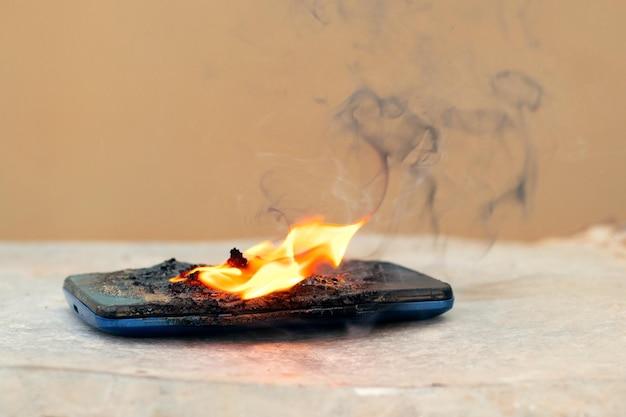Drywall is a common building material that is used in almost every home. It’s durable, versatile, and provides a smooth finish to walls and ceilings. However, one question that often comes up is, at what temperature does drywall catch fire? In this blog post, we will explore the fire-resistant properties of drywall and discuss its ability to withstand heat. We will also address commonly asked questions regarding fire ratings, burning drywall, and fireproofing walls behind wood stoves. So, let’s dive in and learn more about the heat resistance of drywall and how it plays a crucial role in fire safety.
What Temperature Does Drywall Catch Fire
When it comes to fire safety, understanding the properties of different materials is crucial. Drywall, the ubiquitous building material found in many homes and offices, plays a vital role in fire protection. But have you ever wondered at what temperature drywall actually catches fire? Let’s dive into this fiery topic and explore all the burning questions you may have – with a touch of humor, of course!
A Fire to Remember: The Combustible Threshold
Drywall is made up of gypsum, sandwiched between layers of paper. It serves as a fire-resistant barrier, contributing to the overall fire safety of a structure. While drywall possesses some level of fire resistance, it’s important to remember that it is not entirely fireproof. At a certain temperature, drywall can catch fire, leading to potential property damage and endangering lives.
Heating Things Up: The Ignition Temperature
The ignition temperature of drywall can vary depending on various factors such as the thickness of the drywall, the type of insulation behind it, and the presence of any additional fire retardant materials. On average, drywall typically ignites when exposed to temperatures ranging from 900 to 1200 degrees Fahrenheit (480 to 650 degrees Celsius).
Fire Safety Measures: Protecting Your Drywall
To ensure optimal fire protection, it is essential to take preventive measures and follow safety guidelines. Here are some key steps you can take to safeguard your drywall:
1. Install Smoke Detectors and Fire Alarms
Early detection is vital when it comes to fire safety. By installing smoke detectors and fire alarms in your home or office, you’ll get an instant notification in case of fire, allowing you to take immediate action.
2. Maintain Fire Extinguishers
Having a fire extinguisher readily available can significantly mitigate the damage caused by a fire. Ensure that you have a functioning fire extinguisher on each floor of your building, and make sure they are regularly inspected and maintained.
3. Minimize Potential Fire Hazards
Reducing potential fire hazards can go a long way in preventing fires. Keep flammable substances away from areas with drywall, avoid overloading electrical circuits, and never leave open flames unattended.
Don’t Let Your Walls Go Up in Flames
While drywall serves as a valuable fire barrier, it’s important to remember that it can still catch fire under extreme conditions. By understanding the temperature thresholds at which drywall ignites, and implementing fire safety measures, you can protect your property and loved ones from the ravages of fire.
Fire safety should never be taken lightly, and being informed is the first step towards preventing disaster. Stay safe and keep a watchful eye on your drywall’s temperature limits. Let’s keep those flames at bay!
FAQ: What Temperature Does Drywall Catch Fire
Is drywall a non-combustible material
Drywall, also known as gypsum board, is not a non-combustible material. While it does offer some resistance to fire, it is not entirely fireproof.
What wood should you not burn
Certain types of wood should not be burned due to their high resin content, which can result in dangerous creosote buildup in chimneys or stoves. Some examples of wood to avoid burning include pine, cedar, and spruce.
Why is drywall fire-resistant
Drywall is fire-resistant due to its composition. It is made of gypsum, a mineral that contains water molecules. When exposed to high heat, the water molecules in the gypsum board effectively slow down the spread of fire.
What is drywall fire rating
Drywall fire ratings refer to the level of fire resistance it can provide. The common fire ratings for drywall include 30 minutes, 1 hour, 2 hours, or 3 hours. These ratings indicate the amount of time the drywall can withstand exposure to fire before it either collapses or allows fire to penetrate through.
What makes a 2-hour fire-rated wall
A 2-hour fire-rated wall consists of specific construction components, including two layers of 5/8-inch thick fire-rated drywall, as well as special framing materials designed to resist fire. This construction allows the wall to withstand fire for a period of 2 hours before it becomes compromised.
Is it bad to burn drywall
Burning drywall can release harmful gases and toxic fumes into the air. The paper facing on drywall contains various chemicals, and when burned, these chemicals can produce hazardous smoke. It is important to avoid burning drywall for both health and safety reasons.
What does a 3-hour fire rating mean
A 3-hour fire rating indicates that a particular wall or barrier can withstand exposure to fire for a period of 3 hours. In the case of drywall, it means that the drywall, along with its surrounding components, can resist fire for three hours before significant damage occurs.
Can you burn wood in your backyard
Burning wood in your backyard is generally allowed, but there are certain regulations and guidelines to follow, depending on your locality. It is essential to check with your local authorities or fire department to ensure compliance with any restrictions or permits required.
What is fire-resistant drywall called
Fire-resistant drywall is commonly referred to as Type X drywall. It is thicker and denser than standard drywall and contains special additives that enhance its fire-resistant properties. Type X drywall is often used in areas where more robust fire protection is required, such as garage walls or near wood stoves.
How thick is a 2-hour fire-rated wall
A 2-hour fire-rated wall typically consists of two layers of 5/8-inch thick fire-rated drywall, totaling 1 1/4 inches. The thickness of the wall, along with other fire-resistant components, helps it achieve the required fire rating.
How much heat can drywall handle
Drywall can handle a certain amount of heat before it reaches its critical temperature and starts to char or ignite. While drywall can vary in terms of heat resistance, it typically starts to degrade around 150°F (66°C) and will likely catch fire if exposed to temperatures above 450°F (232°C).
How do you know if a wall is fire-rated
To determine if a wall is fire-rated, you can look for specific indicators. These may include fire-resistant labels or stamps on the drywall, or markings on the wall that indicate its fire rating. Additionally, you can consult the building plans or consult with professionals familiar with the construction type.
How hot does it get behind a wood stove
The temperature behind a wood stove can reach high levels, depending on various factors such as the efficiency of the stove and the type of wood being burned. It is not uncommon for temperatures near the back of a wood stove to exceed 400°F (204°C) or even higher.
What happens if you burn drywall
Burning drywall releases toxic smoke and fumes due to the various chemicals present in its composition. Inhaling these fumes can be harmful to human health and may cause respiratory issues or other serious complications. It is crucial to avoid burning drywall and opt for appropriate disposal methods instead.
How hot can drywall get before catching fire
Drywall can start to char or catch fire when exposed to temperatures above 450°F (232°C). However, it is important to remember that the time it takes for drywall to reach this temperature will depend on several factors, including the intensity and duration of the heat source.
How thick is a 1-hour fire-rated wall
A 1-hour fire-rated wall typically consists of one layer of 5/8-inch thick fire-rated drywall, totaling 5/8 inches. This thickness, combined with other fire-resistant components, provides the necessary protection to withstand fire for one hour.
What constitutes a 1-hour fire wall
A 1-hour fire wall consists of construction materials that are specifically designed to resist fire for a duration of one hour. This may include fire-rated drywall, fire-resistant insulation, and properly sealed joints and penetrations to prevent the spread of fire and smoke.
Is drywall heat resistant
While drywall offers some resistance to heat, it is not considered highly heat-resistant. Drywall is more accurately described as fire-resistant, as it can slow down the spread of fire to a certain extent. However, prolonged exposure to high temperatures can cause drywall to degrade and become susceptible to fire.
Does drywall catch on fire
Drywall itself can catch fire when exposed to sufficiently high temperatures, typically above 450°F (232°C). However, its fire-resistant properties, such as the presence of water molecules in the gypsum, help slow down the progression of fire and provide valuable time for evacuation or firefighting efforts.
What’s the fire rating on 5/8 drywall
5/8-inch drywall is often used in fire-rated assemblies and has a fire rating of up to 1 hour. This thickness provides enhanced fire resistance compared to standard 1/2-inch drywall and is commonly utilized in commercial and residential buildings to meet specific safety requirements.
How do you fireproof a wall behind a wood stove
To fireproof a wall behind a wood stove, consider the following measures:
- Install a non-combustible heat shield made of materials like sheet metal or fire-rated cement board.
- Maintain the recommended clearance between the stove and the wall to prevent excessive heat transfer.
- Use fire-resistant insulation in the wall cavity to reduce potential heat buildup.
- Ensure proper ventilation to prevent heat from accumulating in the wall space.
- Consult local building codes and regulations to ensure compliance with specific standards.
Remember, adequate fireproofing measures are essential to protect against potential fire hazards in your home. Stay safe and enjoy the warmth of your wood stove responsibly.

